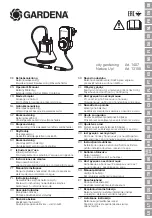
EML224N Operation and Installation Manual
SKIPPER
Electronics AS
Edition: 2020-22-05
Page 45 of 64
Chapter: 6. Calibration procedure
6. Calibration procedure
Speed logs are calibrated in the factory to give reasonable results after installation, however installation
and hydrodynamics vary from vessel to vessel. It is therefore necessary to calibrate speed logs once in
place.
SKIPPER speed logs have two parameters that need to be corrected by calibration.
1. Angular sensor installation error (heading error).
2. Speed variations due to drag or mounting tilt.
1.
Heading Error
T
he heading error parameter corrects for an angular offset in mounting. This offset will result in a
rotation of the measurement axes. The resultant speed will be unaffected, but the longitudinal and
transversal components will be incorrect. An offset will result in the vessel typically showing too much
transversal speed, but may also result in speed calibration failing (i.e. initial calibration fails when
further points are added). This offset will show itself as an averaged drift on the calibration.
Reducing Heading errors
. New generation sea valves can be manually adjusted to ensure the sensor
is correctly aligned. Alignment and heading offset are directly connected. To minimalise the offset, the
sensor should be mounted pointing ahead
• Tank mountings
have ahead marks on both the tank and the sensor insert.
• Sea valves
have a flat mark on the port side of the pole which when a flat object is placed against
this, will point fore/aft (Figure 6.1
).
Forward
Mounting error (heading error)
A flat object points fore/aft.
The flat side should be on the port side.
Fig. 6.1 Sea valve alignment
















































